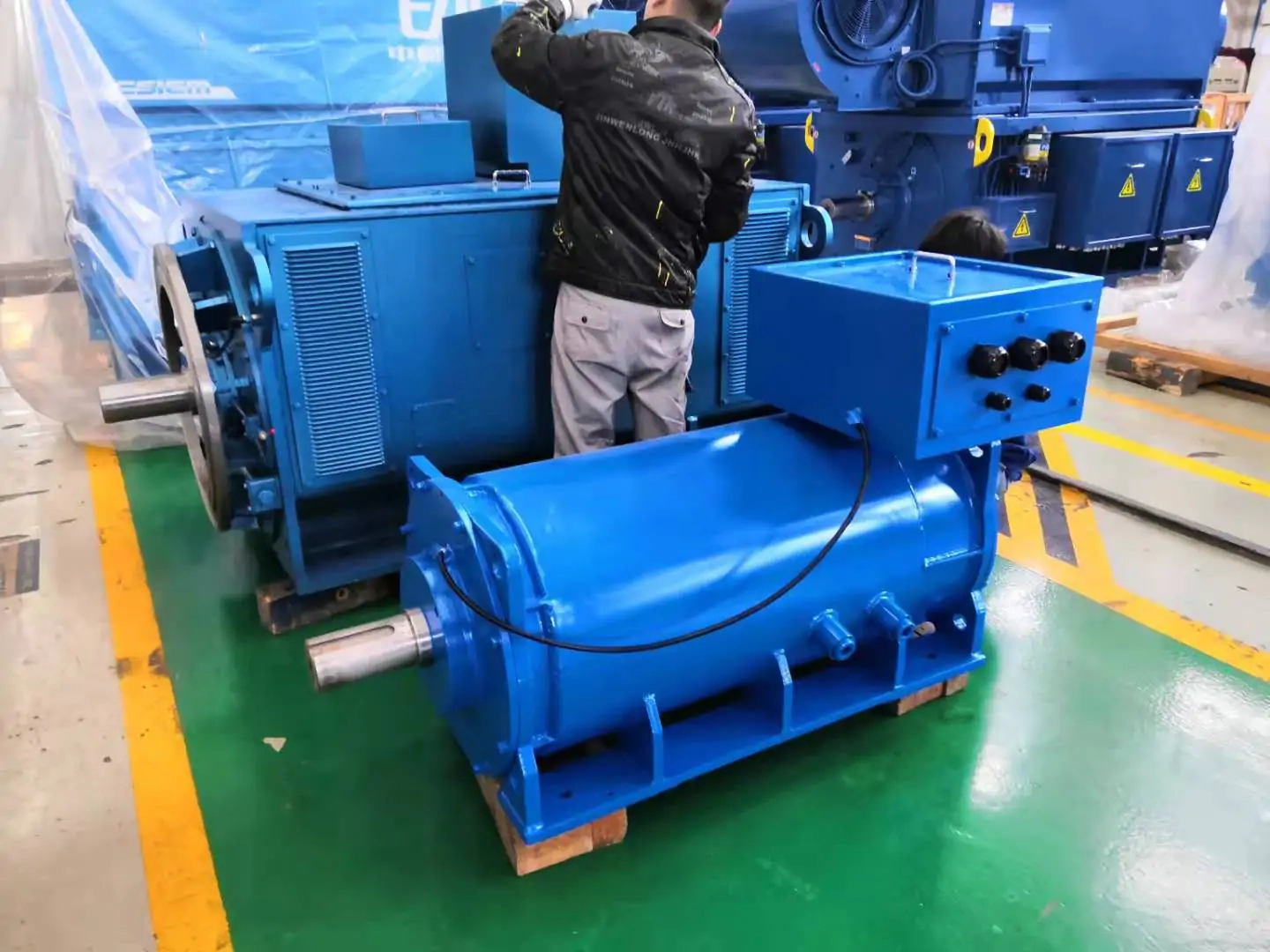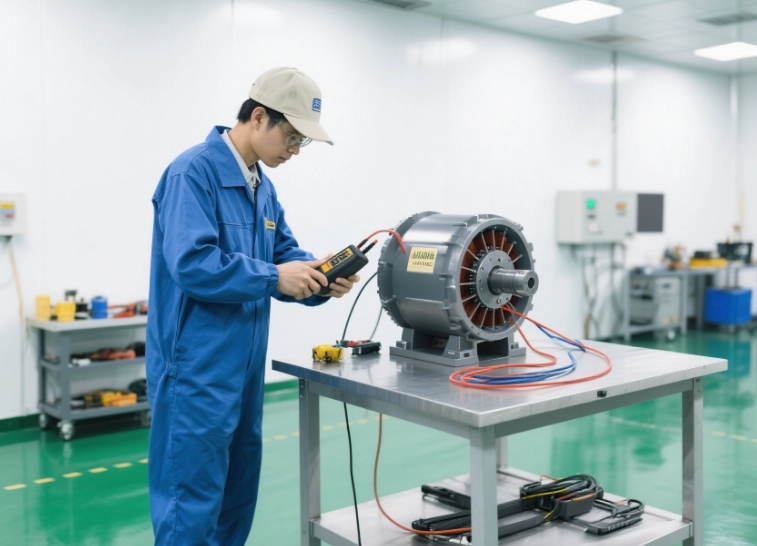Permanent magnet synchronous motors, called PMSMs, run industries like mining, textiles, and oil fields with great efficiency. Good upkeep keeps these motors working well, saves power, and lengthens their life by up to 20%.
A PMSM uses strong NdFeB magnets in its rotor, paired with a stator and a variable frequency drive (VFD) to manage speed. These motors, like ENNENG’s TYB series, provide 5-10% better efficiency and a power factor of at least 0.95 compared to regular induction motors. They perform well in places like gold mines, textile factories, and air compressors. For example, ENNENG’s TYPCX series is made for specific industry needs. It offers high accuracy and saves energy. The small size and wide speed range make PMSMs perfect for tough tasks.

Without regular care, PMSM can face problems like demagnetization, overheating, or insulation breakdown. These issues can lead to costly replacements. ENNENG’s careful manufacturing, using advanced CAD simulation, reduces flaws. But upkeep is still vital. Overloading from too much torque or low voltage can harm magnets and insulation. Testing back electromotive force (EMF), as explained later, helps spot demagnetization early.

Keeping a PMSM at its rated current prevents overload and harm. Overloading often happens due to too much load torque, low voltage, or mechanical jams in tools like belt conveyors or pumps. To keep the rated current, check the driven equipment. Ensure the load torque matches the motor’s ability. Measure the input voltage. Confirm it stays within 5% of the rated value. Inspect couplings and gears for jams. Make sure they are aligned and flexible. If you find a jam, stop the motor right away. Fix the problem and restart.
A PMSM needs balanced three-phase currents to operate safely. The current in any one phase should not differ from the average of the other two by more than 10%. Use a clamp meter to measure each phase’s current while the motor runs. Calculate the average of the two closest phase currents. Compare the third to ensure it stays within the 10% limit. If the imbalance is too big, check for bad wiring, VFD problems, or damaged motor windings.
Overheating can damage a PMSM’s insulation and magnets. So, regular temperature checks are important. Use an infrared thermometer to measure bearing and stator temperatures every 100 operating hours. Keep bearings below 80°C and stator windings below 120°C, as most manufacturers recommend. If temperatures get too high, check bearings for cracks, scratches, or low oil levels. For high-power uses, consider direct liquid cooling, like oil flooding, to control heat.
Vibration and noise in a PMSM suggest misalignment or loose parts. These can cause overload and burnout. Every month, look at and feel anchor bolts, end covers, and bearing glands for looseness. Use a vibration analyzer to measure levels. Aim for less than 2.8 mm/s, based on ISO 10816 standards for small motors. Listen for grinding or odd sounds. These may point to bearing wear or rotor imbalance. Tighten loose parts. Replace broken components before restarting.
A clean area prevents short circuits and insulation damage in a PMSM. Keep the space within 3 meters of the motor’s air inlet free of dust, water, and debris. Check the surroundings weekly, especially in dusty places like coal mines. Use air filters or enclosures for extra protection. Clean the motor housing with a dry cloth to remove dust without harming insulation. Check insulation resistance monthly with a megohmmeter. Aim for over 1 MΩ at 500V DC.
Control systems like Field-Oriented Control (FOC) and Direct Torque Control (DTC) improve a PMSM’s efficiency and active performance. Verify that the VFD matches the motor’s specifications, as with ENNENG’s VFD-integrated PMSMs. Run open-loop control tests to check hardware connections. Adjust FOC parameters, like PI gains, to improve torque and efficiency. Consult ENNENG’s technical team if needed. For high-speed operations, monitor performance during field weakening. This keeps temperatures safe.
Demagnetization weakens a PMSM’s performance. Early detection is key. To check for it, disconnect the motor from its load, like a machine head. Run the motor at its rated frequency using a VFD in a no-load condition. Measure the output voltage, or back EMF, with a multimeter. Compare this to the motor’s nameplate value. If the back EMF is more than 50V lower, the motor is demagnetized. Contact ENNENG for custom replacement solutions. Their TYB series, known for great efficiency, depends on these checks to maintain performance.
Preventing demagnetization in a PMSM means avoiding overload and high temperatures. Monitor load torque and current regularly. This prevents prolonged overload. Ensure proper cooling to keep temperatures below 150°C, the critical limit for NdFeB magnets. Use VFDs with overload protection settings matched to the motor’s specifications. Schedule yearly maintenance to keep the motor in top shape.
ENNENG’s custom PMSM, like the TYPCX and FTYP series, make upkeep easier and improve performance. Designed for industries like textiles and air compressors, these motors meet specific needs. This reduces maintenance challenges. Advanced CAD simulation and precise machining lower flaws. This makes upkeep simpler.
Maximize your PMSM’s performance and lifespan with ENNENG’s expertise. Contact them at sales@enpmsm.com or +86 532 66000559 to explore custom motor solutions and expert upkeep support. Visit https://www.enpmsm.com/ to learn how their carefully engineered motors can power your business sustainably.
A PMSM usually lasts 10-20 years with proper care. Factors like operating conditions, cooling, and load management affect its life. ENNENG’s PMSMs, with strong NdFeB magnets and sturdy designs, last longer when maintained regularly.
There are many control strategies for PMSM drives. These include Field-Oriented Control (FOC), Direct Flux Control (DFC), and Direct Torque Control (DTC). Compared to FOC and DFC, DTC offers better torque response. It is considered a more suitable control algorithm for PMSM.
Both scalar and vector control techniques are key to the effective operation of synchronous motors. Scalar control is simple and cost-effective. However, vector control provides accuracy and active performance.